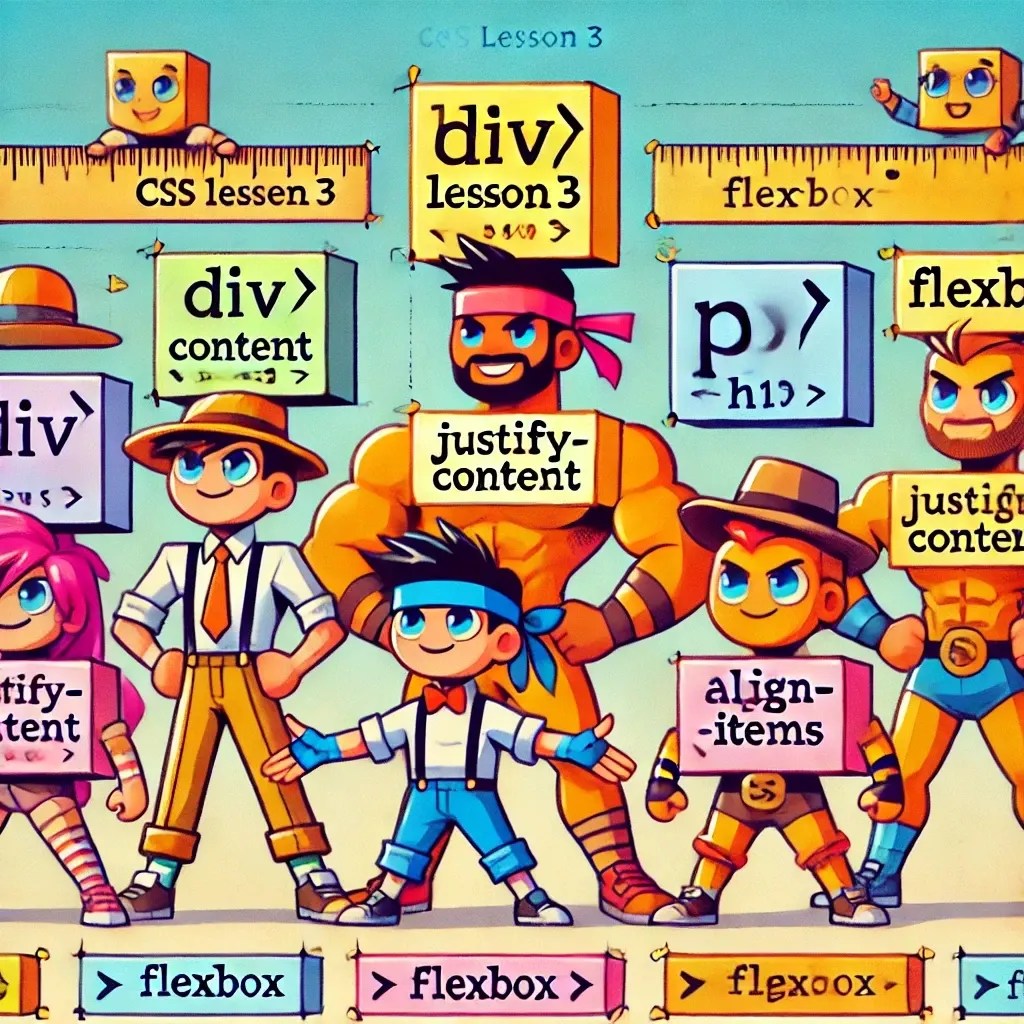
Lesson 3: Flexbox – Turning Your Webpage into a Well-Organized Tea Party!
Overview
Greetings, web wizard! 🎩 If your webpage looks like a chaotic gathering where elements bump into each other like unruly guests at a wedding, it’s time to bring some order into the chaos. And what better way to do it than by using CSS Flexbox?
Flexbox is like a perfectly organized British tea party—each element has its seat, knows its place, and no one spills tea on anyone else (well, most of the time). After this lesson, you’ll be able to arrange your web elements with the grace of a butler setting up a royal banquet. So, grab a cup of tea, and let’s dive into Flexbox!
Step 1: Set Up and Host with Caddy (Like a Proper Butler!)
Before we start arranging our guests, let’s get the party started by serving up our project with Caddy. Open your terminal and navigate to the project folder:
cd ~/Documents/my-css-project
Now, serve your project with Caddy:
caddy file-server --listen :8080
Your webpage is now up and running on http://localhost:8080. Let’s add some structure to it!
Step 2: Setting Up Flexbox – The Butler of Layouts
To start using Flexbox, all you need to do is declare display: flex; on a container element. Think of it like hiring a butler for your tea party—someone who makes sure all the guests are seated properly.
HTML Setup:
First, let’s set up our table (HTML) with some guests (elements):
<!DOCTYPE html>
<html lang="en">
<head>
<meta charset="UTF-8">
<meta name="viewport" content="width=device-width, initial-scale=1.0">
<title>Flexbox Tea Party</title>
<link rel="stylesheet" href="styles.css">
</head>
<body>
<div class="flex-container">
<div class="box">Cup of Tea 1</div>
<div class="box">Cup of Tea 2</div>
<div class="box">Cup of Tea 3</div>
<div class="box">Cup of Tea 4</div>
</div>
</body>
</html>
Now, let’s instruct our butler on how to arrange the table with styles.css:
styles.css
body {
font-family: Arial, sans-serif;
}
.flex-container {
display: flex; /* Welcome, Mr. Flexbox Butler! */
justify-content: space-around; /* Let’s spread out the tea cups evenly. */
padding: 10px;
}
.box {
padding: 20px;
margin: 10px;
background-color: lightcoral;
color: white;
font-weight: bold;
}
Save your file, refresh http://localhost:8080, and voilà! Your tea cups (divs) are now evenly spaced, like guests at a proper afternoon tea.
Step 3: Understanding Flexbox Properties – The Art of Seating Arrangements
Flexbox offers a host of properties to help you organize your tea party. Here are the main ones:
justify-content: Decides how to align items horizontally. It’s like deciding whether to spread the tea cups out or have them all huddle together like old friends.
justify-content: flex-start;— All cups are lined up at the start, like guests rushing to grab the first biscuits.justify-content: flex-end;— Cups gather at the end, like everyone waiting for dessert.justify-content: center;— Everyone gathers in the middle, like a friendly chat around the teapot.justify-content: space-between;— Cups are evenly spaced, like a very disciplined queue.justify-content: space-around;— Cups have equal space around them, like a polite conversation circle.
align-items: Handles the vertical seating. Make your cups stand tall or relax comfortably.
align-items: flex-start;— All cups rise to the top, like stretching for the first scone.align-items: center;— Cups sit nicely in the middle, like good listeners.align-items: flex-end;— Cups relax at the bottom, like guests slumping in chairs after too many crumpets.
Step 4: Creating Rows and Columns – The Tea Party Dance
You can also change the direction of your Flexbox layout using flex-direction. This property decides whether your guests (elements) sit in neat rows or gather in columns:
.flex-container {
display: flex;
flex-direction: row; /* Default — cups sit side by side. */
}
.flex-container.column {
flex-direction: column; /* Now they stack up, like a pile of teacups. */
}
Try it Out!
Modify your HTML to see the difference:
<div class="flex-container column">
<div class="box">Cup of Tea 1</div>
<div class="box">Cup of Tea 2</div>
<div class="box">Cup of Tea 3</div>
<div class="box">Cup of Tea 4</div>
</div>
Your cups are now stacked vertically, like a fine tower of tea delicacies.
Step 5: The Full Tea Party Setup – A Layout Fit for Royalty
Time to combine everything into one perfect Flexbox setup! Here’s what your styles.css should look like:
body {
font-family: Arial, sans-serif;
}
.flex-container {
display: flex;
justify-content: center; /* Centered like a teapot on a tray. */
align-items: center; /* Everyone is perfectly aligned. */
flex-wrap: wrap; /* Wrap elements into rows or columns as needed. */
gap: 15px; /* A little space between guests, please. */
border: 2px solid lightgrey;
padding: 20px;
background-color: #f9f9f9; /* Classic British tea background. */
}
.box {
padding: 20px;
background-color: lightblue;
color: darkblue;
font-weight: bold;
text-align: center;
}
Now, every cup is perfectly placed, like guests in the Queen’s drawing-room.
Conclusion
Fantastic work, old chap! Now your webpage elements know how to behave, line up, and sit properly. Flexbox is like a master butler for your CSS — arranging everything with a touch of elegance and a cup of tea in hand.
In the next lesson, we’ll tackle CSS Grid, the ultimate in layout design. If Flexbox is like a cozy tea party, CSS Grid is more like a grand banquet hall, with tables, chairs, and even chandeliers arranged just so!
Until then, enjoy your perfectly organized tea party, and don’t forget to keep that pinky finger up! ☕😎